Czerwone kimchi z kapusty pekińskiej i buraczków. Buraczane kimchi - czerwona koreańska kiszonka
Tradycyjna koreańska kiszonka składa się zazwyczaj z kapusty pekińskiej, rzepy, gochugaru i kilku innych dodatków. W Korei istnieje ponad 200 rodzajów kimchi i każdy ma swój rodzinny, najlepszy przepis. Dlatego nie bójmy się eksperymentować , mieszajmy, kiśmy i odkrywajmy nowe smaki.
Czerwone kimchi w mojej wersji, to nic innego, jak klasyczne kimchi z dodatkiem czerwonego buraczka. Buraczki to wspaniały dodatek do kiszonek, polecam spróbować kiszony kalafior z buraczkami lub kiszoną kalarepę z burakiem. Czerwony burak poprawia walory smakowe kiszonek oraz nadaje im pięknej rubinowej barwy.
W wersji wegańskiej pomijamy sos rybny i dodajemy dodatkową łyżkę sosu sojowego.
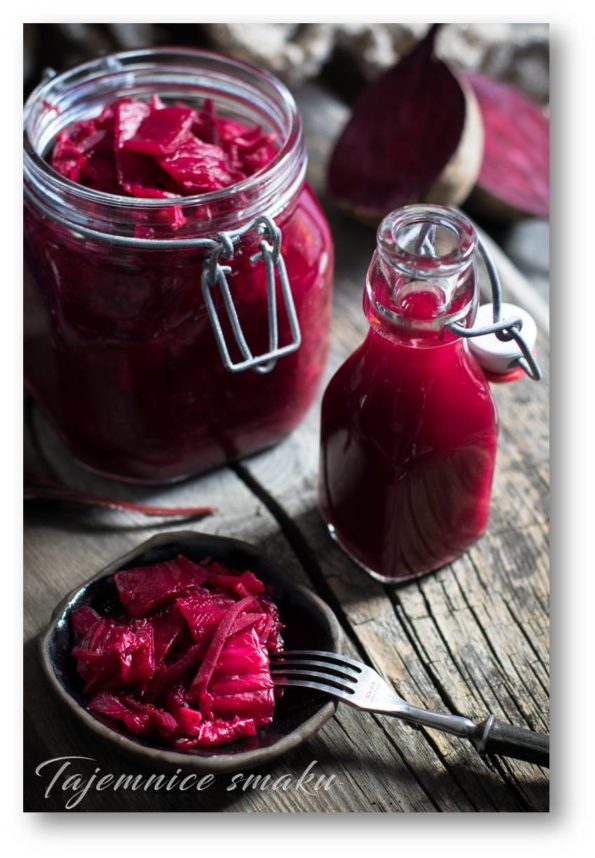
SKŁADNIKI
Kimchi
Pasta do kimchi
WYKONANIE
- Kapustę pekińską przekrawamy wzdłuż na pół i siekamy (nie za cienko).
- Pokrojoną kapustę przekładamy do dużej miski, zasypujemy solą, zalewamy wodą do przykrycia.
- Mieszamy i w miarę możliwości obciążamy (ja kładę okrągłą deskę drewnianą i na niej stawiam słoik/słoiki z wodą), odstawiamy na około godzinę.
- W czasie kiedy kapusta się maceruje przygotowujemy pastę kimchi.
- Zagotowujemy 200 ml wody razem z mąką ryżową, cały czas mieszamy, aż powstanie kleik, dodajemy cukier i odstawiamy z ognia do przestudzenia.
- Do przestudzonego kleiku dodajemy starty na tarce obrany imbir i czosnek, paprykę gochugaru, sos sojowy i sos rybny, mieszamy.
- Białą rzodkiew, buraczki i marchewkę obieramy, kroimy na cienkie plastry, a następnie w słupki, tzw. julienne.
- Dymkę kroimy na 2-3 cm kawałki, pod skosem.
- Namoczona kapustę odsączamy dokładnie z solanki, dodajemy pastę kimchi, rzodkiew, marchewkę, buraczki, szczypior i całość dokładnie mieszamy. Polecam do tej czynności założyć rękawiczki.
- Wymieszane warzywa przekładamy do dużego słoja lub kamionki.
- Obciążamy (np. wyparzonym kamieniem), przykrywamy i zostawiamy na około 3 - 5 dni w temperaturze pokojowej.
- Podczas kiszenia pilnujemy, aby kiszonka na wierzch zalana była płynem.
- W trakcie próbujemy, jeżeli kimchi jest już dla nas wystarczająco kwaśne przekładamy w mniejsze słoiki i aby zatrzymać proces fermentacji wkładamy do lodówki.
- Czerwone kimchi podczas fermentacji puściło dużo soku. Polecam nadwyżkę soku przecedzić i przelać do butelki. Odrobiną soku z kimchi możemy doprawiać zupy, sosy lub sałatki.
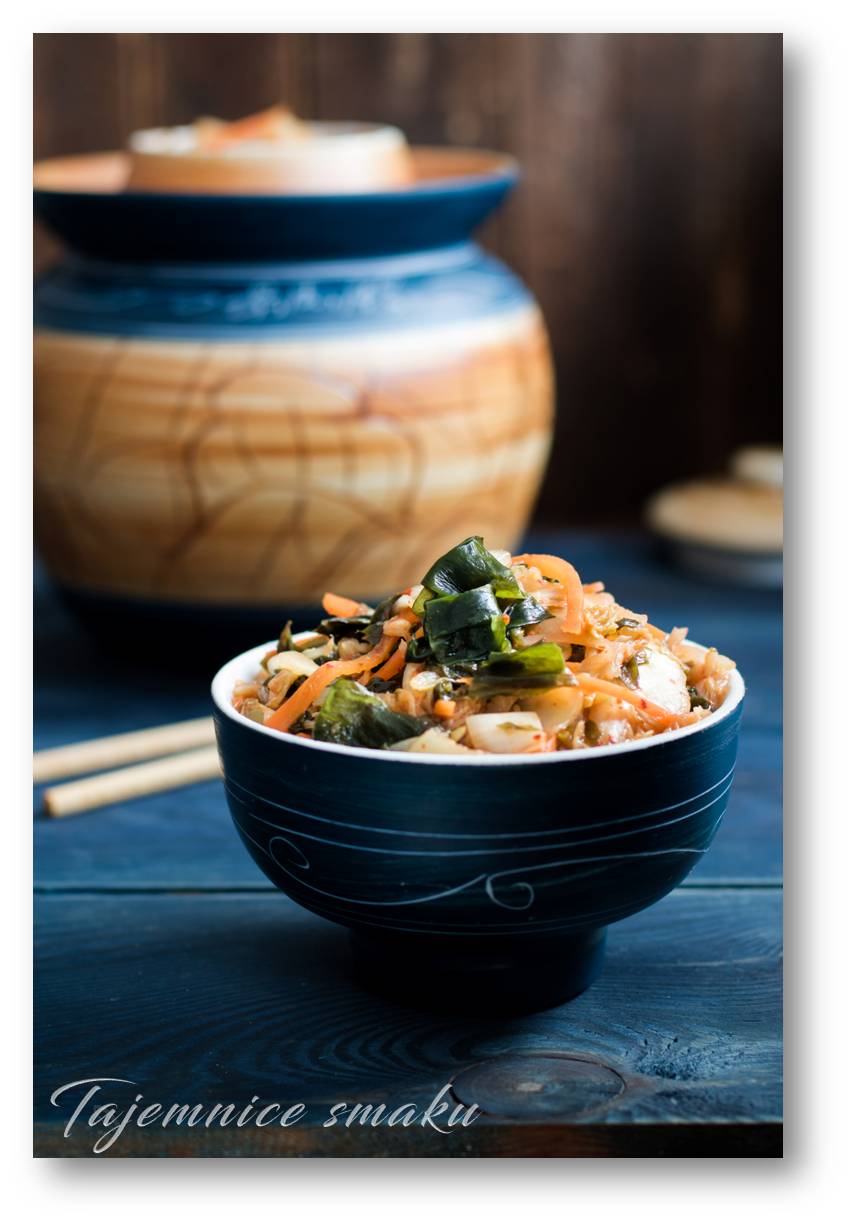
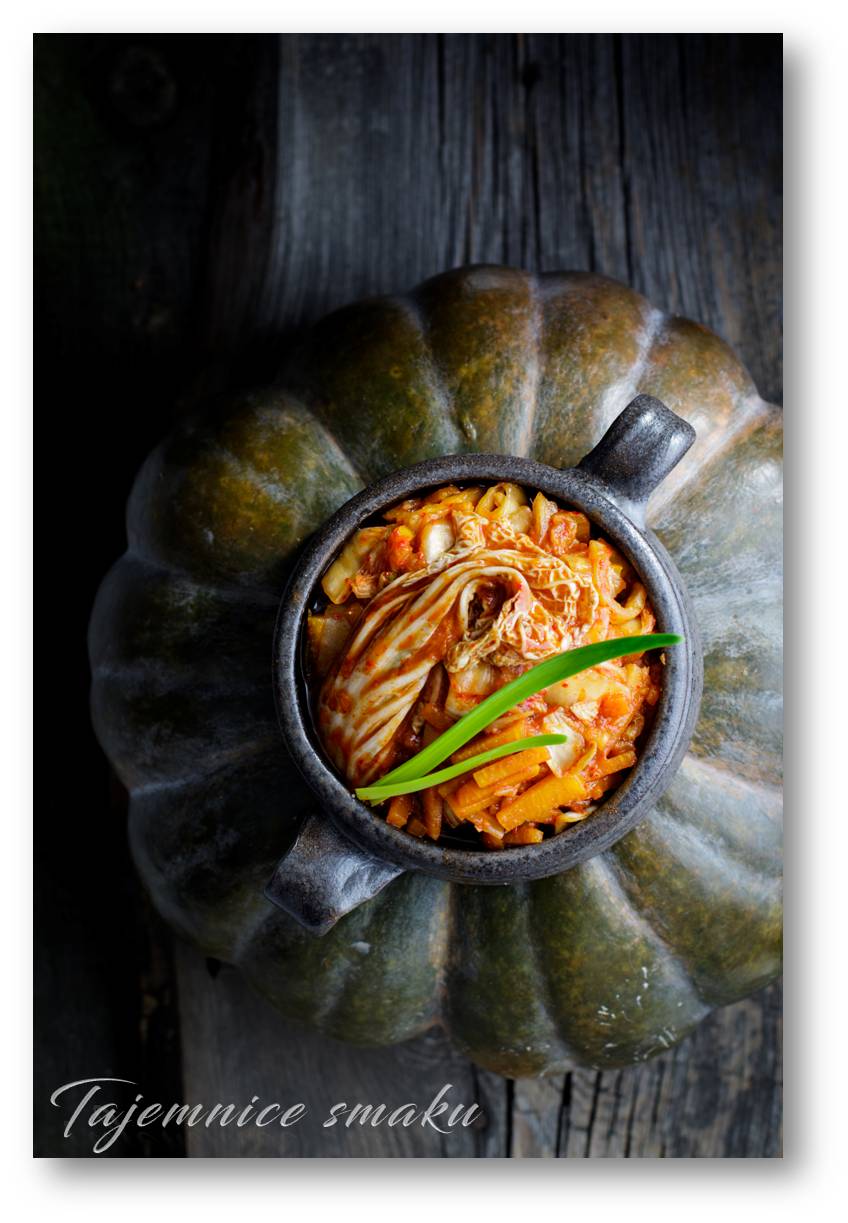
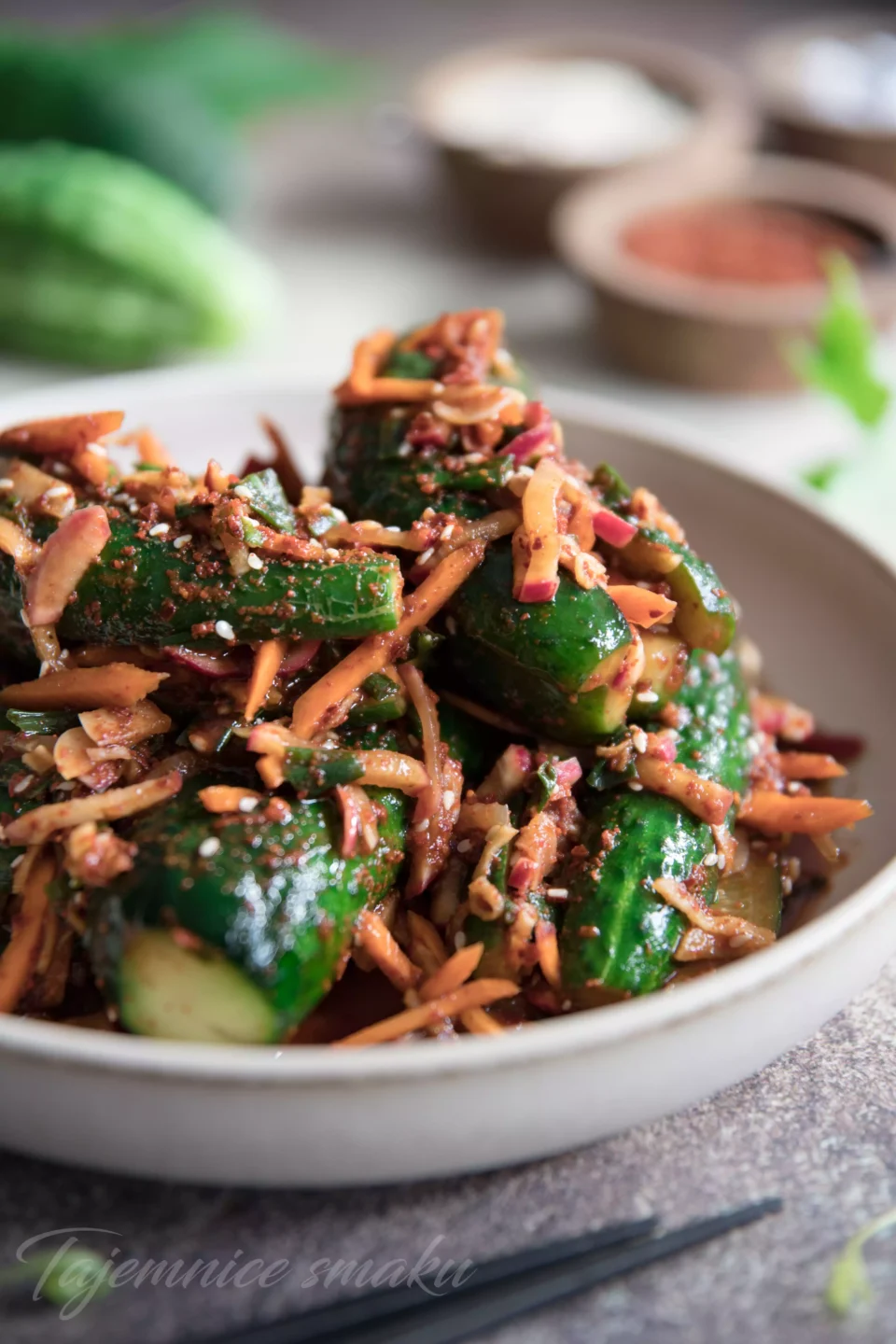
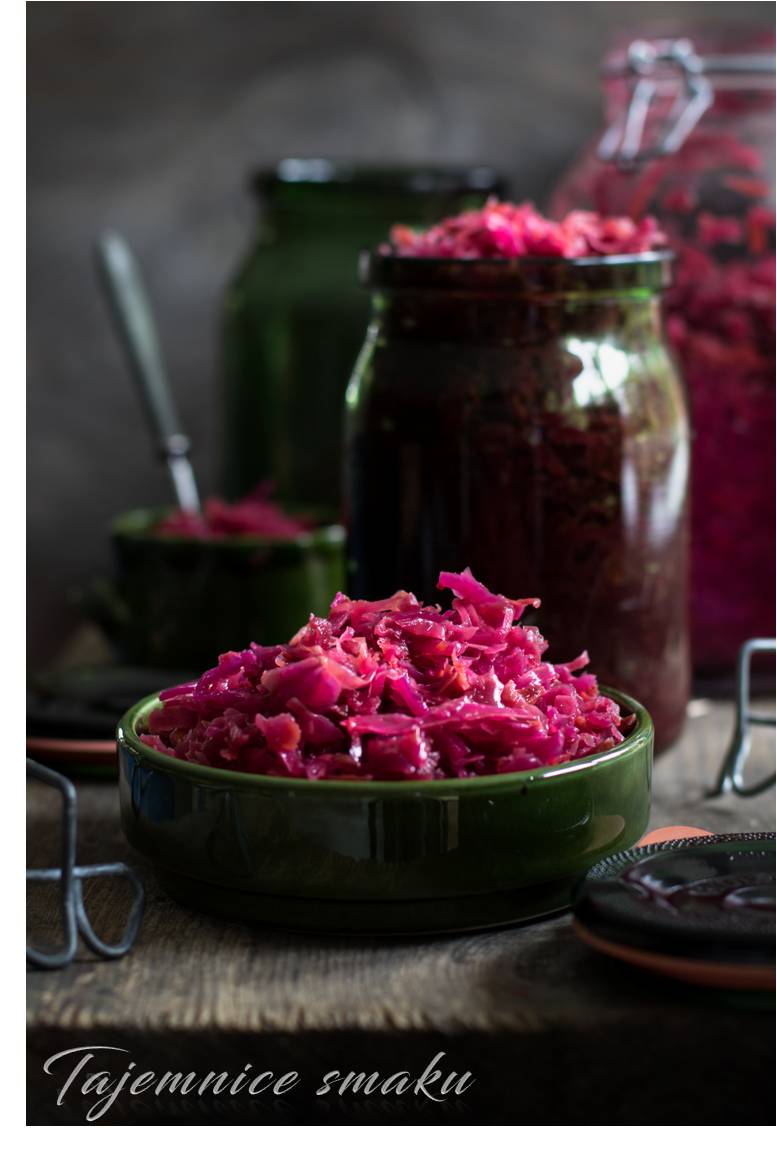

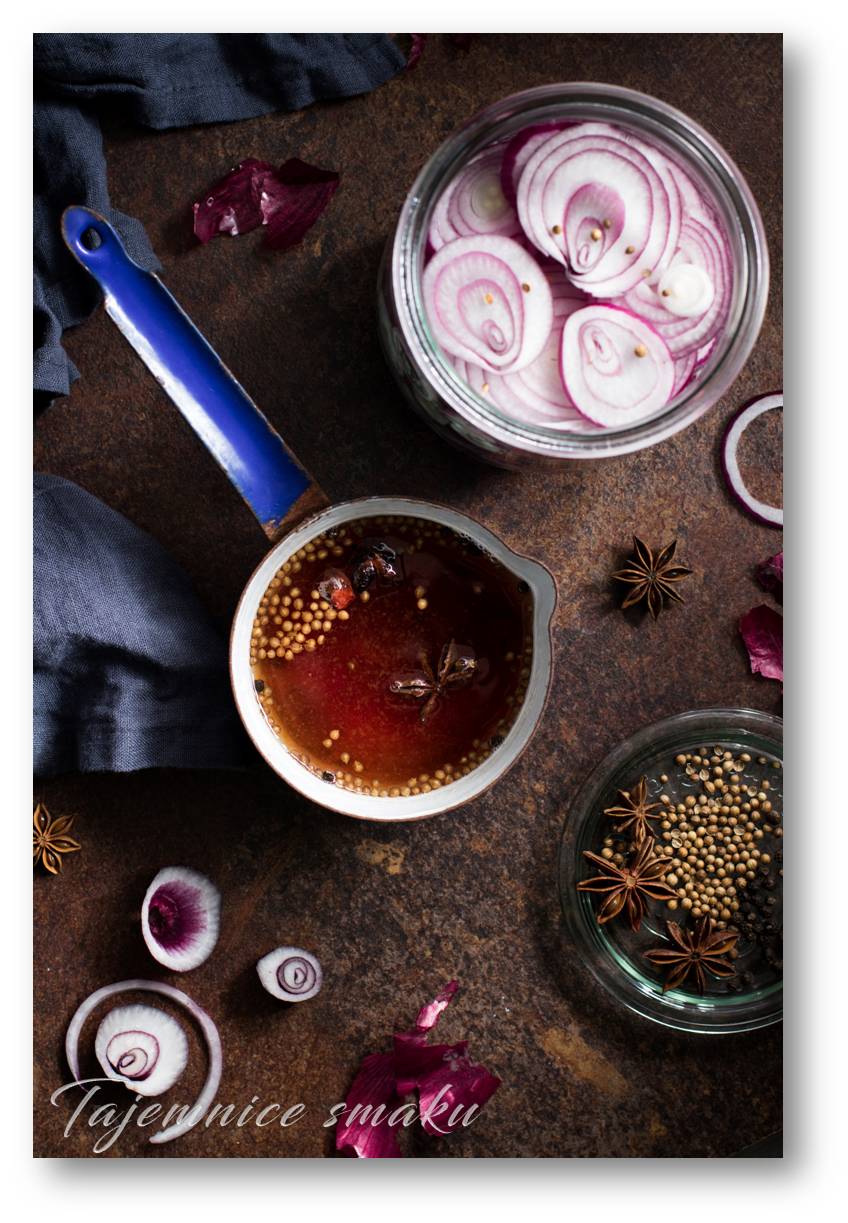
Łukasz 2020-04-16 11:53:55
Właśnie się powoli zbieram, żeby w końcu zrobić kimchi samemu. Ta wersja z burakiem wyjątkowo mi się podoba. Też będę musiał spróbować :D
Odpowiedz
TajemniceSmaku 2020-04-16 16:25:18
Łukasz, do dzieła! Kimchi robi się bardzo łatwo i szybko 🙂 Ważne, żeby potem doglądać, pielęgnować i w porę do lodówki schować 🙂
Odpowiedz
Dodaj komentarz
Twój adres e-mail nie zostanie opublikowany
Możesz się zalogować, aby automatycznie wypełnić dane.